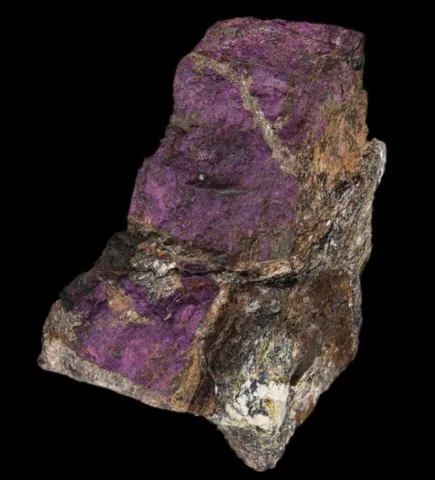HETEROSITE
Class : Phosphates, arsenates, vanadates
Subclass : Anhydrous phosphates
Crystal system : Orthorhombic
Chemistry : FePO4
Rarity : Quite common
Heterosite is a phosphate of iron and manganese which forms a continuous series with purpurite. It is a secondary phosphate coming from the alteration of primary phosphates (notably triphylite and lithiophilite) which is found in granitic pegmatites. Its name is taken from the Greek heteros (other), because it is the second manganese mineral discovered in the type locality : La Vilate near Chanteloube (Haute-Vienne). Heterosite does not form crystals but cleavable masses, sometimes triphylite pseudomorphs, or thin encrustations of dark pink, carmine red to purple, or purplish, turning brown-black then black by surface oxidation.
Main photo : Heterosite from Helen Beryl Mine, South Dakota, USA © Harold Moritz
Heterosite in the World
Twinning
No twin known for this mineral species.
Fakes and treatments
No fakes recorded for this mineral species.
Hardness : 4 to 4.5
Density : 3.40
Fracture : Irregular
Streak : Light purple
TP : Opaque
RI : 1.861 to 1.911
Birefringence : 0.050
Optical character : Biaxial -
Pleochroism : Strong
Fluorescence : None
Solubility : Hydrochloric acid
Magnetism : NoneRadioactivity : None

